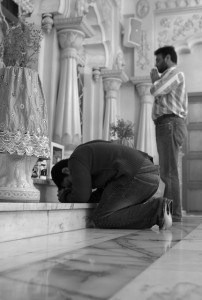National Public Radio (NPR) has spent the summer producing a series of short interviews and podcasts exploring how the shift in masculine and feminine roles and identity over the last 50 years has impacted America’s men. Entitled “Men in America,” this series includes a wide range of 2 to 7 minute vignettes which define masculinity in the 21st century.
According to the segment “The Modern American Man, Charted”, 60% of college students are women, more women are earning their bachelor’s degree than men, and girls, on average, are outpacing boys in school with better GPAs. In contrast, it notes that 75% of today’s high school dropouts are boys. Other segments have highlighted the decline of men in factory jobs and blue collar jobs due to changes in technology, economics, and the decline of unions.
As a result of the shift in jobs and education, male identity has undergone somewhat of a face lift. For example in “Complicated Cars Put a Dent In an Old Father-Son Ritual” the car is no longer a universal symbol of the American manhood. Rather, segments such as “Vegan Men,” “Learning to Be a Man, From My Mother,” “Today’s Married Men Seek a ‘Full Partner’”, and “Giving Boys A Bigger Emotional Toolbox” note that a the contemporary man is one who is compassionate, protective, loving, and most of all, can express his emotions. Other interviews decry the cliches such as “Be a man,” “Real men play through the pain,” and “Man Up.” In other words, a real man in the 21st century is someone who speaks displays tenderness and transparency — a trait which was previously taken as a weakness.
This raises another question for someone connected to the Church: What does it mean to be a man in the American Church? Although American manhood is making a shift towards compassion, friendship, emotional intelligence, transparency, and other characteristics one might typically find endorsed by a faith community, everyone from scholars to pastors is noting that male attendance is far lower than female attendance at any church on any given Sunday. The faith-based organization Church for Men offers the following staggering statistics:.
*Almost 25% of married church-going women worship without their husbands.
*There are 13 million more women than men on any given Sunday in America’s church.
*Over 70 percent of boys who are being raised in the church will abandon it during their teens and most will never return.
*Most regular male worshippers over the age of 35 do not have one male friend at church.
So what gives?
Authors such as David Murrow (“Why Men Hate Going to Church”) and Steve Sonderman (“Why Are Men Leaving the Church?”) suggest that the problem is that American churches have adopted primarily feminine language and ways of interacting and exploring spirituality. According to Sonderman, there are nine items that men desire from a faith community that they are just not receiving. These include a longing for homilies regarding work, opportunities at greatness, mentorship and leadership training, brotherhood, and emotional healing.
So while contemporary men are growing into compassionate, loving, transparent men, they are still looking for spiritual growth that is distinctly masculine. The challenge to the contemporary church is how to identify this quality of masculinity. If we can’t address this issue soon, like schools which are trying to decrease male high school dropouts, the Church in America will soon lose its male constituency. It seems that America’s churches should be moving quickly to address what it means to be a Christian man in the 21st century.”




